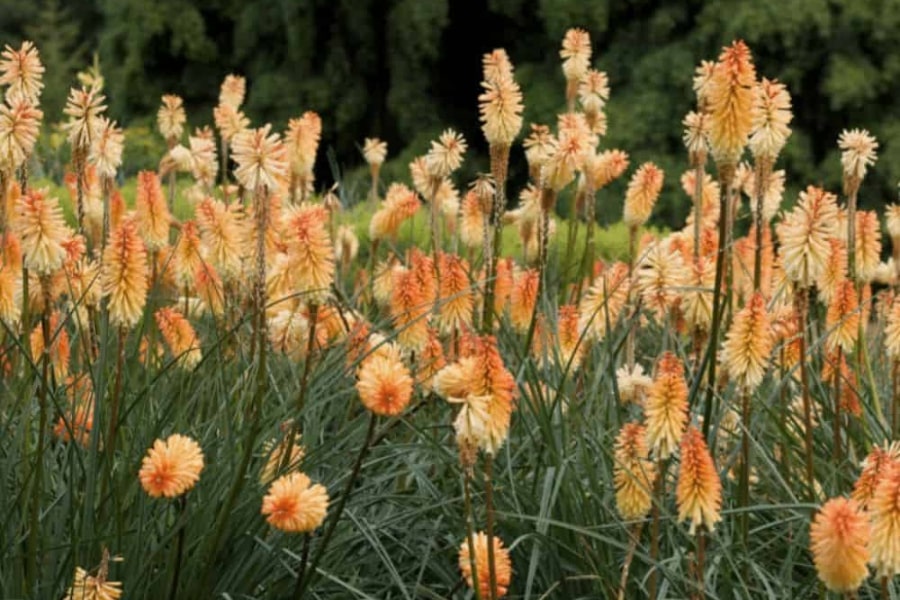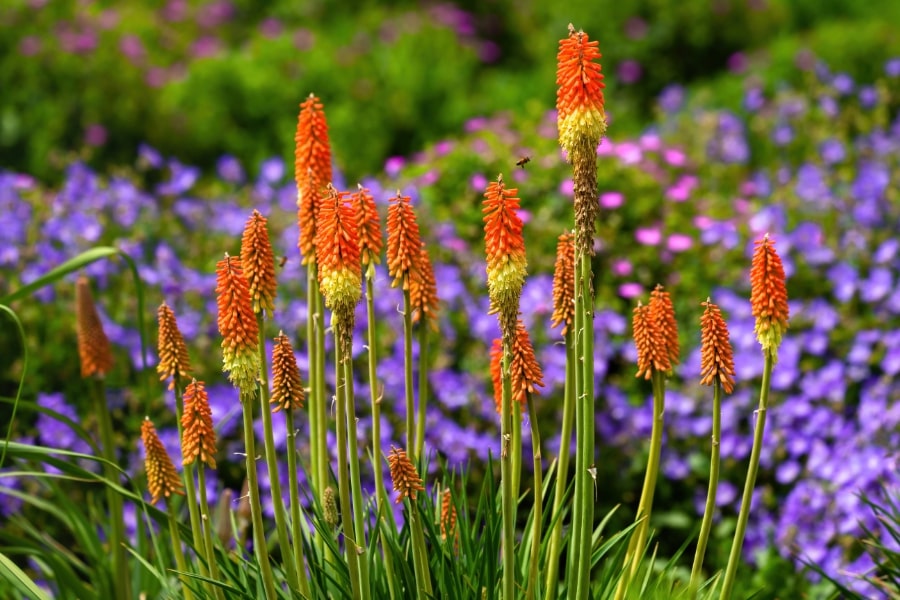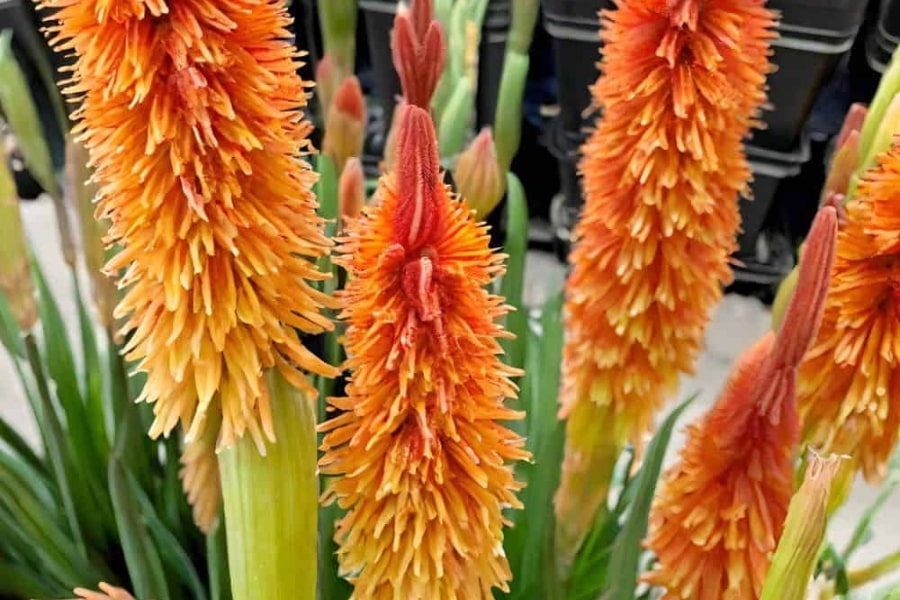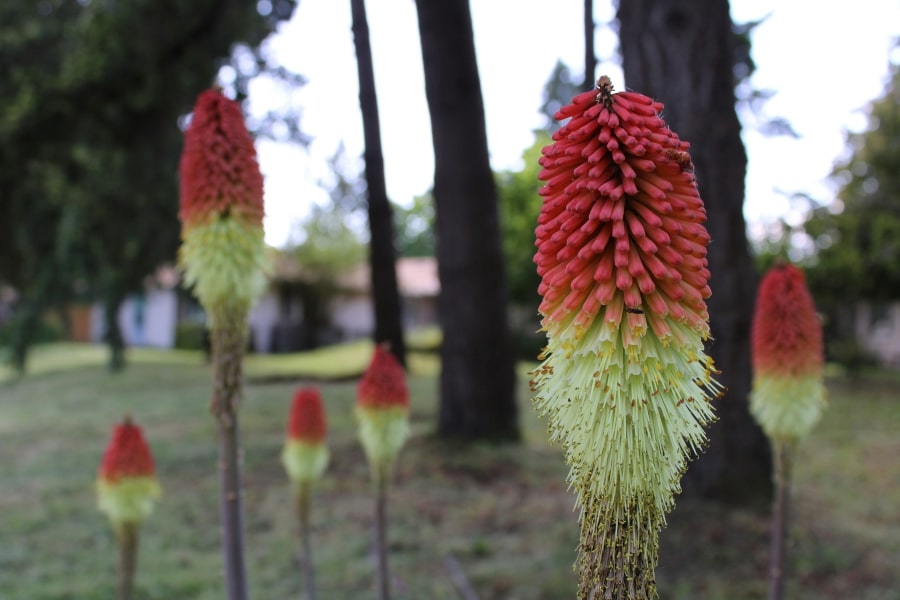Kniphofia, commonly known as Red Hot Poker, is a genus of perennial flowering plants native to Africa. These striking plants are prized for their tall, spiky flower stalks that produce vibrant, torch-like blooms. The flowers of Kniphofia plants are the standout feature of the plant and give them their common name, Red Hot Poker.

Our Selection of Kniphofia
We are growing 3 varieties of Kniphofia in 2025. We will also supplement our Kniphofia with those offered through our vendors. We are growing the following varieties, and they will be available in April & May:
Growing and Caring for Kniphofia
These plants thrive in full sunlight and well-draining soil. Adequate spacing between plants is essential to allow air circulation and prevent overcrowding, as they can spread over time. Kniphofia benefits from regular watering, especially during the growing season. Mulching around the base of the plants helps retain soil moisture and suppress weeds. Applying a balanced, slow-release fertilizer in the spring can promote healthy growth and vibrant flowering.
Pruning is an essential aspect of Kniphofia care. After the flowering period, trim the spent flower spikes to encourage new growth and additional blooming. In colder climates, cutting back the foliage to the ground in late autumn is advisable to help the plant survive winter. Dividing Kniphofia clumps every few years is beneficial for maintaining plant health and vigor. This can be done in early spring before new growth, ensuring that each division has sufficient roots and foliage.
Red Hot Poker plants are relatively disease and pest-resistant, but it’s still a good practice to monitor for any signs of pests and address them if necessary. When flowering, aphids can be attracted to the flower heads. These can easily be addressed using high pressure water to blow the aphids off the flower heads or treatment with the organic pesticide insecticidal soap.

Leaves and Flowers
The leaves of the Kniphofia plant are long, narrow, and sword-like, creating a dramatic and architectural presence in the garden. These lance-shaped leaves often form dense clumps, adding a sense of textural contrast and depth to the landscape. The leaves typically exhibit shades of deep green, which serve as a rich backdrop for the plant’s stunning floral display.
The flowers of the Kniphofia are truly a sight to behold, resembling fiery torches or poker-like spikes, hence the common name “Red Hot Poker.” Emerging from tall, sturdy stems that rise above the foliage, the flower spikes have densely packed tubular florets that transition in color along their length. The lower florets tend to be a warm, vibrant hue, such as red, orange, or yellow, intensifying towards the top, creating a gradient effect. This captivating color transformation adds a sense of dynamism to the plant’s overall appearance. Kniphofia flowers also attract pollinators.

Uses in the Garden
These plants work well as focal points in garden beds and borders, thanks to their tall flower stalks and vibrant blooms. Kniphofia can also be used for adding height and architectural interest to the landscape. They pair well with other perennials, ornamental grasses, and shrubs. When planted en masse, they create a stunning display of color and texture. They are also great for xeriscaping due to their low water needs.

Frequently Asked Questions
Is Kniphofia Deer Resistant?
Deer typically avoid plants with bitter or tough foliage, and Kniphofia’s sword-like leaves and tall flower spikes fall into this category. While no plant can be guaranteed to be entirely deer-proof, Kniphofia is often a good choice for gardens where deer are a concern.
Are Kniphofia Perennials?
Yes, Kniphofia plants are perennials. They regrow from the same rootstock each spring, producing new foliage and flowering spikes. Kniphofia perennials can provide years of vibrant blooms in the garden with proper care, including suitable growing conditions and occasional division to rejuvenate crowded clumps.
